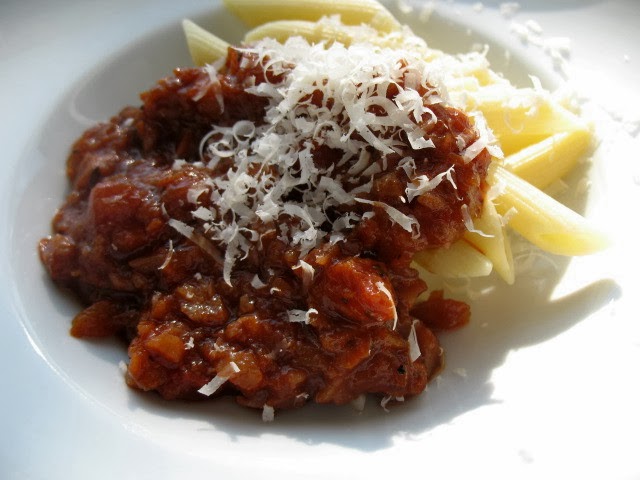This wonderful recipe for basic buttermilk biscuits,
my interpretation of Harry’s grandmother’s southern recipe, is still just about
the only biscuit recipe that matters to me. I recently made it into smaller
biscuits to feed a crowd (a large enough crowd to make my house feel pretty
“cozy”). They were presented as accompaniments to pots of hot soup on a frigid
early January night, and it seemed that they were gone in seconds. Success!
But as I was baking them, I noticed that it was
taking significantly longer to properly cook them than had been indicated in
the recipe I posted years ago. I had apparently adjusted baking times as needed
without really thinking about it, waiting to pull the biscuits out of the oven
until I knew they were good and done. I can’t think of anything more annoying
to a recipe reader than secret instructions. A quick re-visit was in order.
The concocting portion of the recipe needs no
revision, although I do think that kneading the dough more deliberately, if
still gently, makes it easier to work with when it comes to cutting out the
biscuits. It does take more time for the biscuits to get to the desired
just-beginning-to-brown stage than what is stated the original post (and
possibly the original handed-down recipe. I can’t remember.) I simply increased
that time in the instructions below. It’s still best, as always, to prepare to
exercise your own judgement, a skill that is essential in the making of a good
baker. The biscuits will be done when they are done, and oven temperatures can
vary across households.
While this biscuit batch is for about twelve 2 ½ to
3-inch biscuits, you can use this recipe for more, smaller biscuits with good
results. It’s likely that the baking time will be slightly shorter for smaller
biscuits.
I still think there are ways this can be varied to
include whole grains or more flavors, and I did do such a thing with this cinnamon raisin version. Southern-style white flour buttermilk biscuits are
classic, however, and their charm would become more elusive with unnecessary
changes or additions. As they are, they’re simple, quick to throw together,
satisfying on their own with butter or jam or ham and cheese, and great
accompaniments to so many things.
Grandmama’s
Buttermilk Biscuits
3 cups all-purpose flour
½ teaspoon fine salt
5 teaspoons baking powder
¼ teaspoon baking soda
½ cup cold butter (1 stick)
1 ½ cups cultured buttermilk
1. Preheat oven to 450 F. In a large bowl, combine the flour, salt, baking powder and baking soda. Sift or whisk together to combine.
2. Cut the butter into small chunks. With a pastry blender, knives or your hands, cut or work the butter into the flour mixture until it is well-distributed and the butter pieces are smaller than peas and coated with flour. (I usually end up using my hands.)
3. Add the buttermilk and stir gently until all of the flour mixture is moistened. Add a little more buttermilk if the mixture is too dry.
3 cups all-purpose flour
½ teaspoon fine salt
5 teaspoons baking powder
¼ teaspoon baking soda
½ cup cold butter (1 stick)
1 ½ cups cultured buttermilk
1. Preheat oven to 450 F. In a large bowl, combine the flour, salt, baking powder and baking soda. Sift or whisk together to combine.
2. Cut the butter into small chunks. With a pastry blender, knives or your hands, cut or work the butter into the flour mixture until it is well-distributed and the butter pieces are smaller than peas and coated with flour. (I usually end up using my hands.)
3. Add the buttermilk and stir gently until all of the flour mixture is moistened. Add a little more buttermilk if the mixture is too dry.
4. Turn the dough out onto a well floured surface. Gently knead the dough a few times and shape it into a rough disk. Gently pat the disk out to about 1 inch thick, dusting the flour as needed to keep the dough from sticking. Cut the dough into about 12 biscuits with a round cutter or an inverted glass. (I used a 2 ½-inch biscuit cutter.) Place the cut biscuits on a baking sheet. (I line my baking sheet with a silicone baking mat.)
5.
Bake at 450 F for 15-18 minutes or until just beginning to brown. Serve as soon
as they are cool enough to eat. Leftovers are nice when warmed in the
microwave. The biscuits also freeze well.
Makes about 1 dozen biscuits.
Makes about 1 dozen biscuits.
Other
recipes like this one: Barley Flour Scones, Cheddar Jalapeno Scones, Cinnamon Raisin Buttermilk Biscuits


























